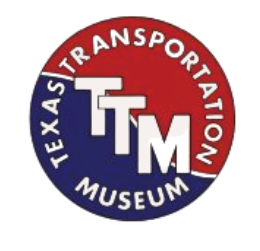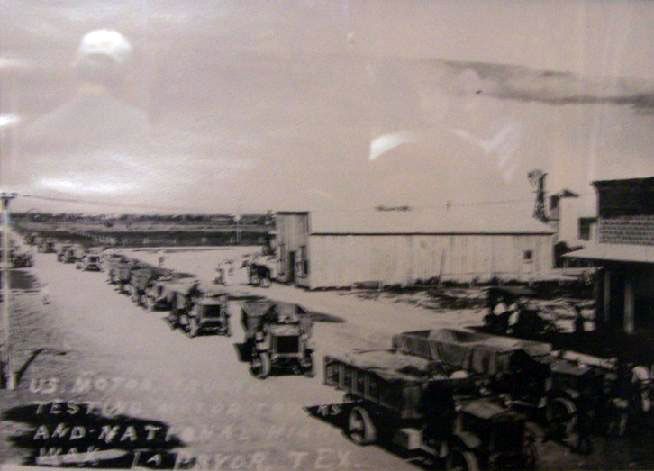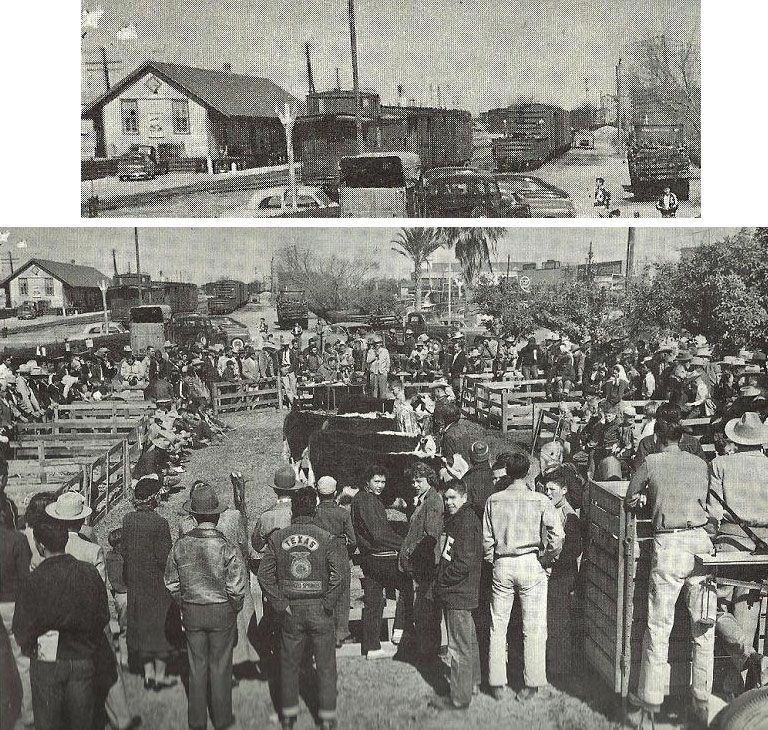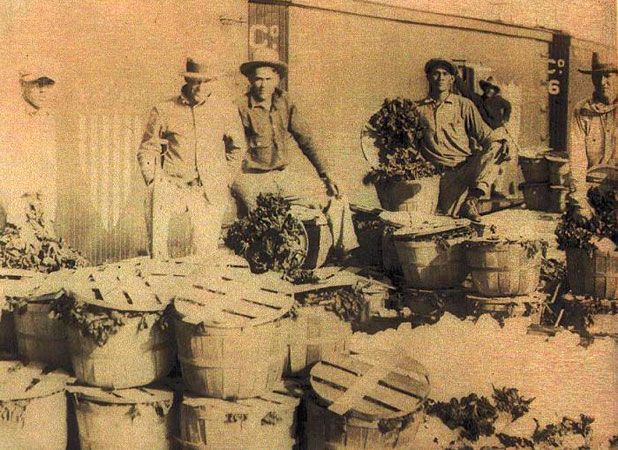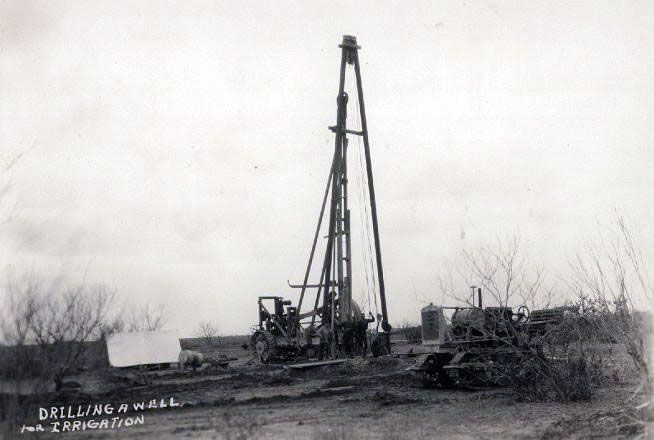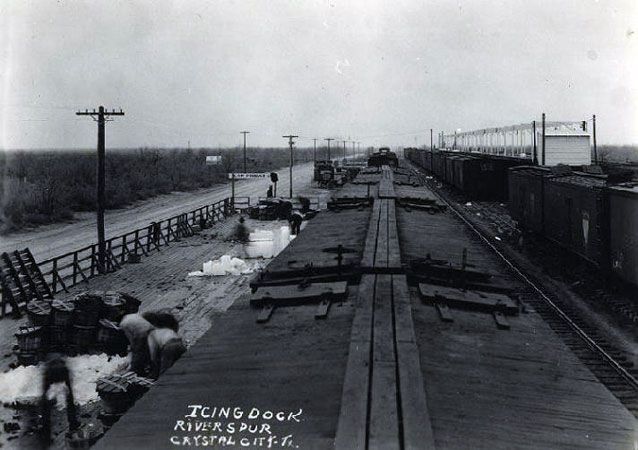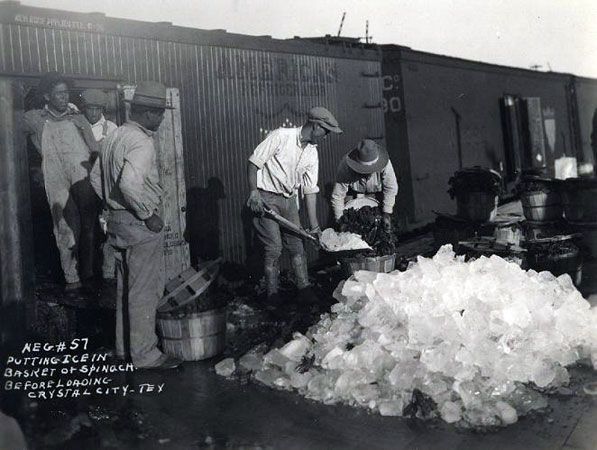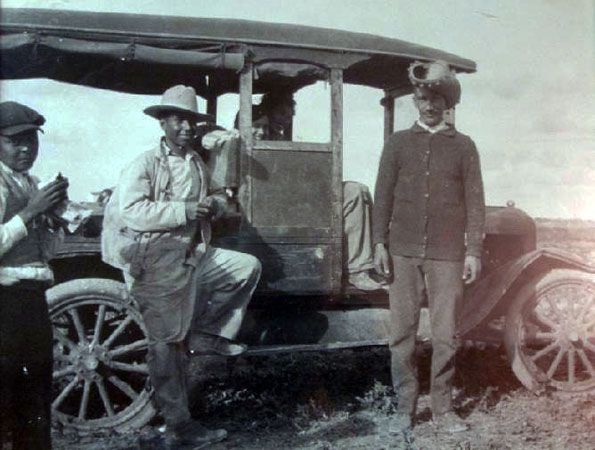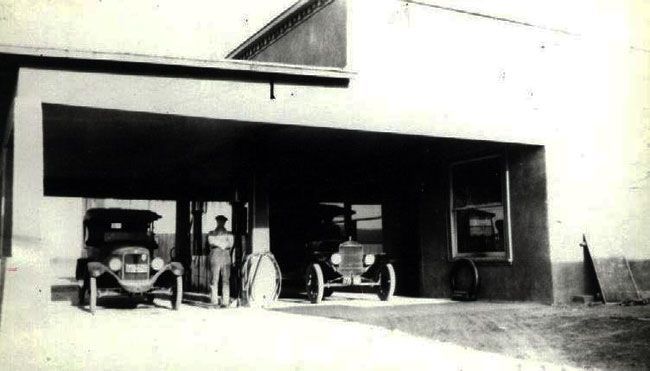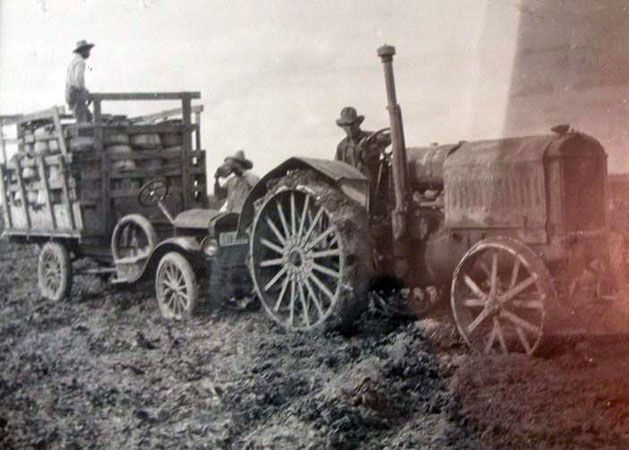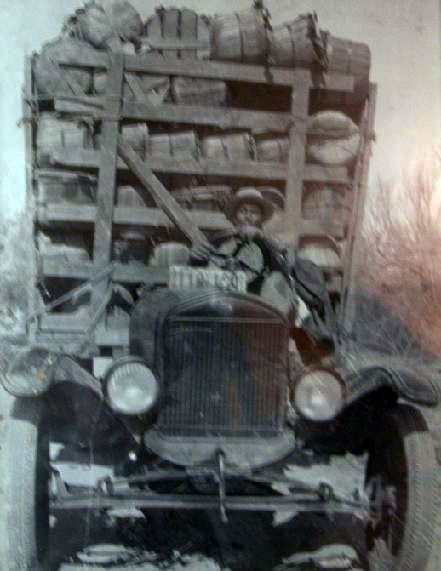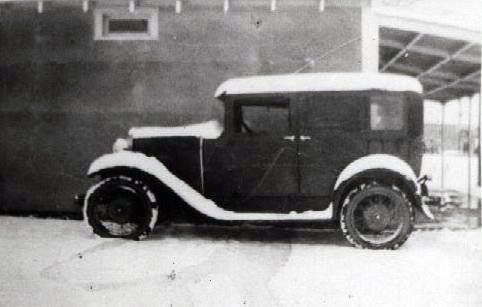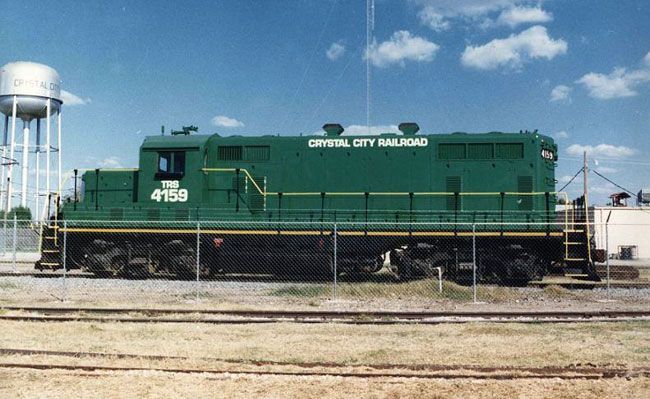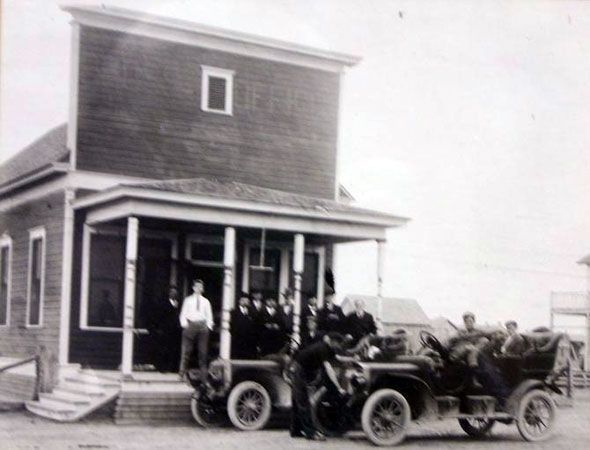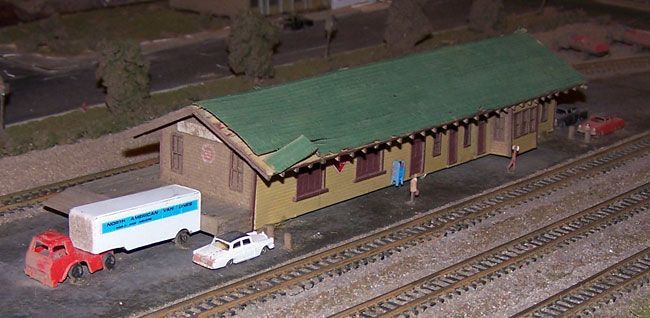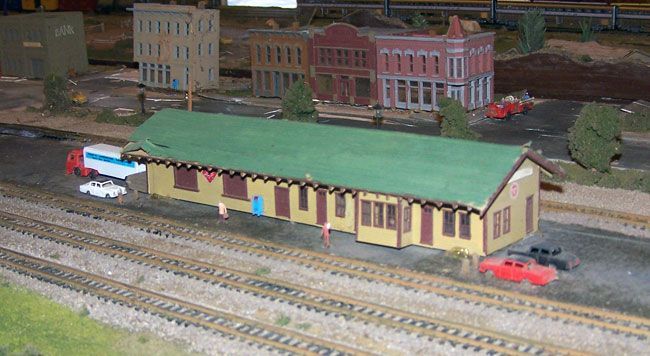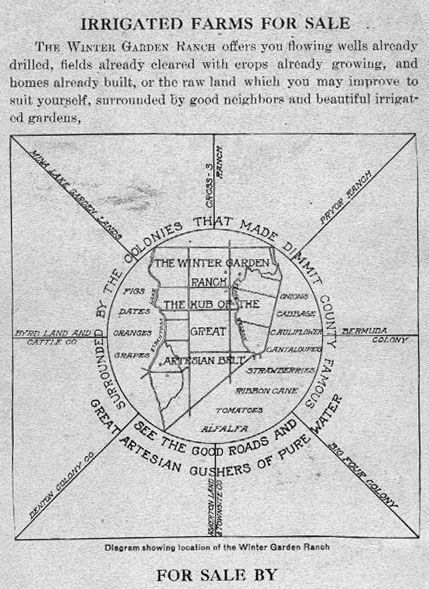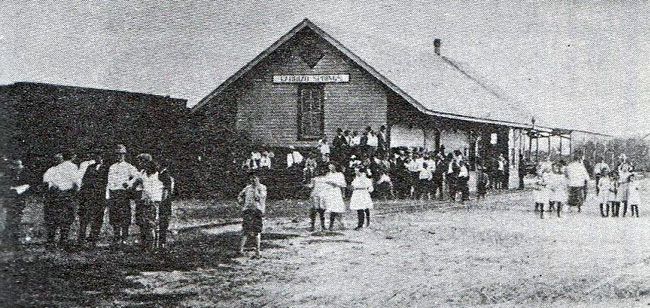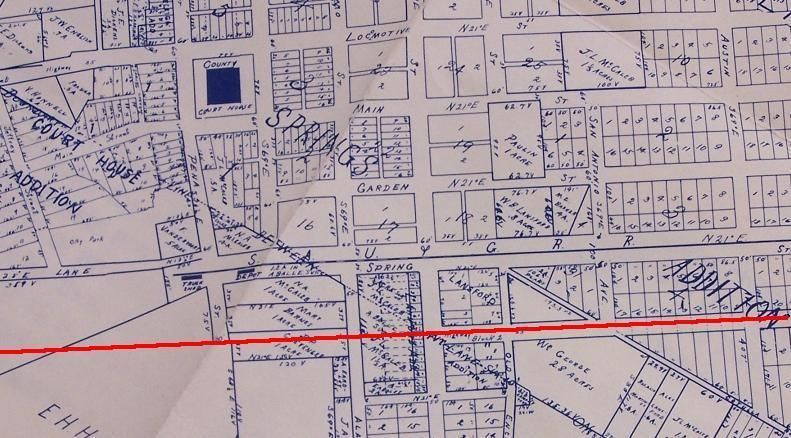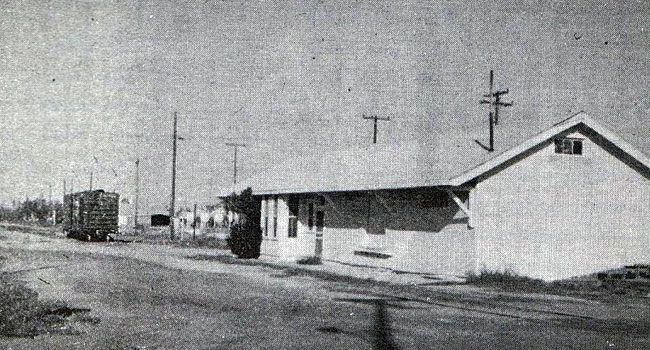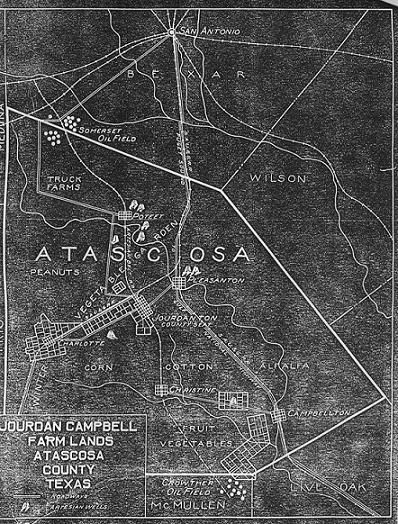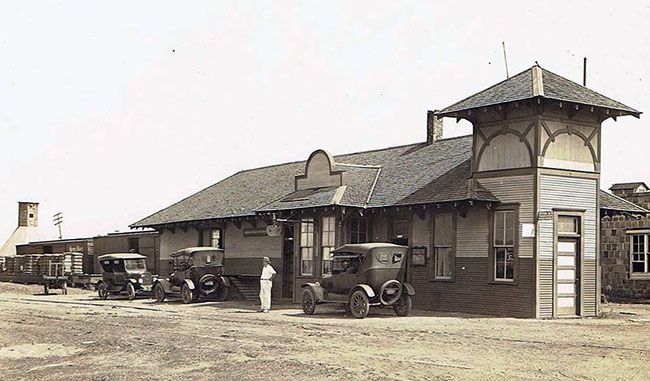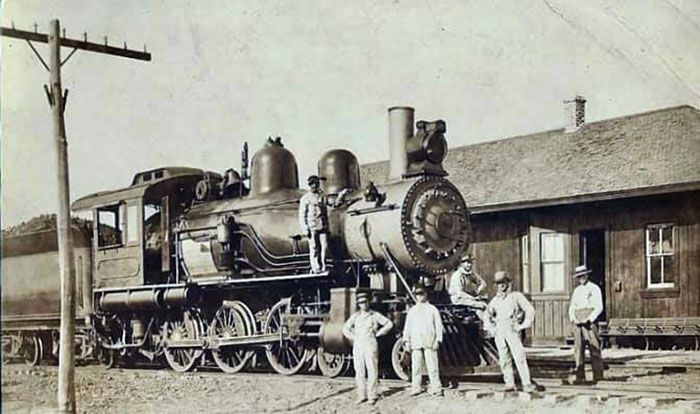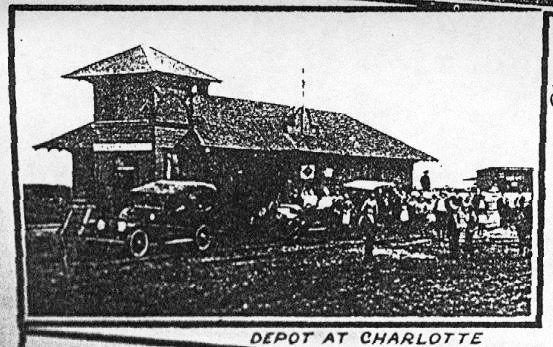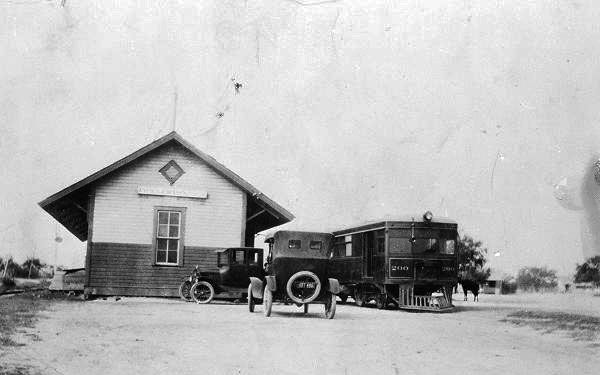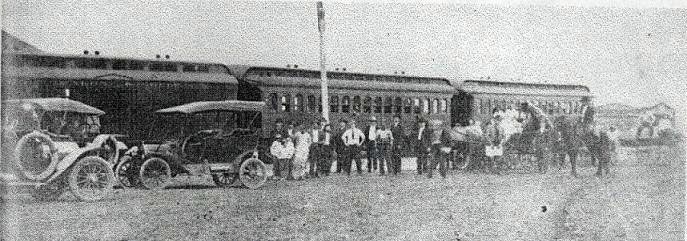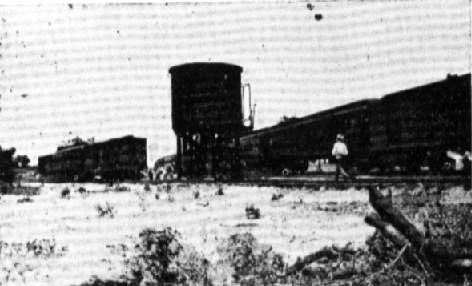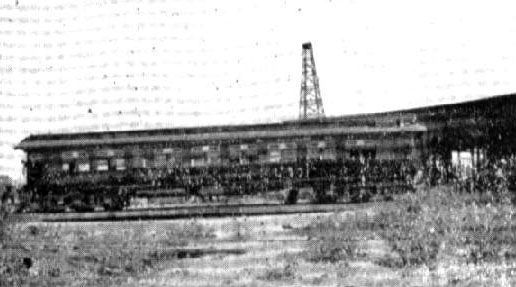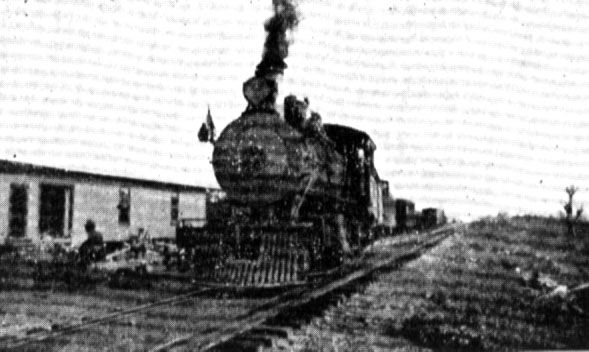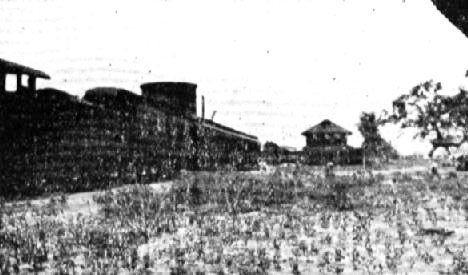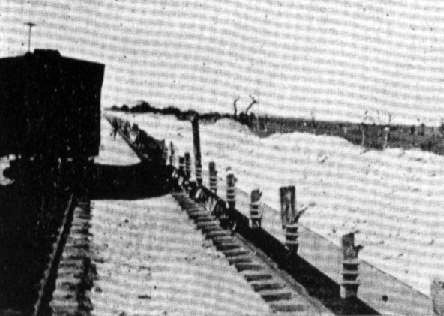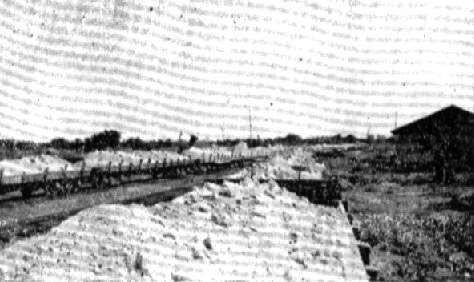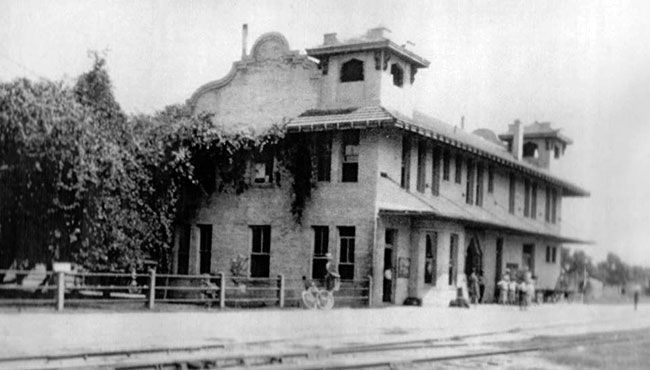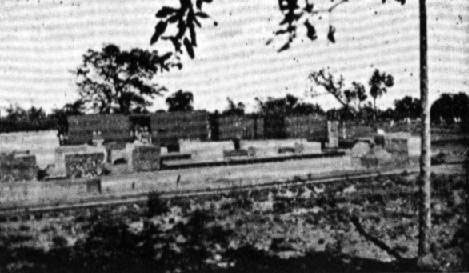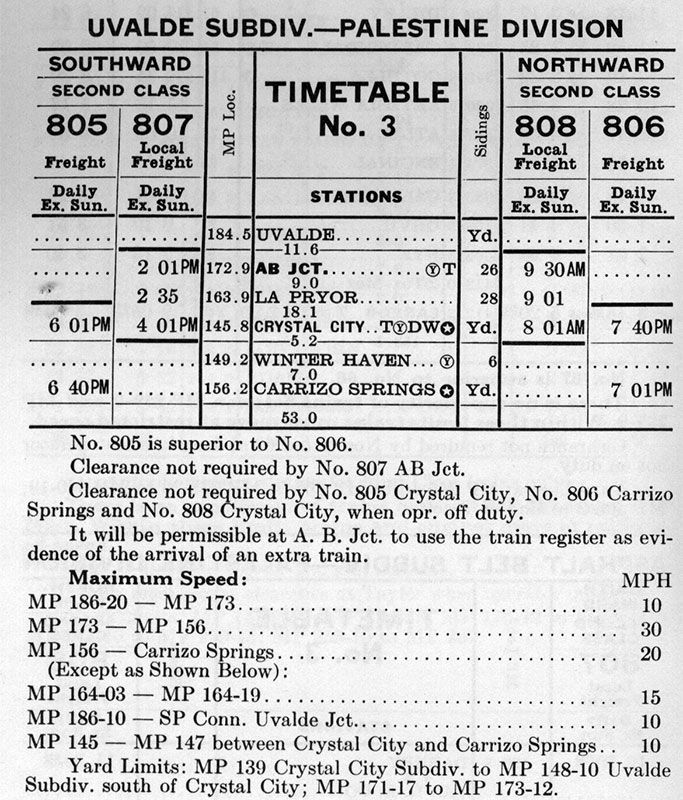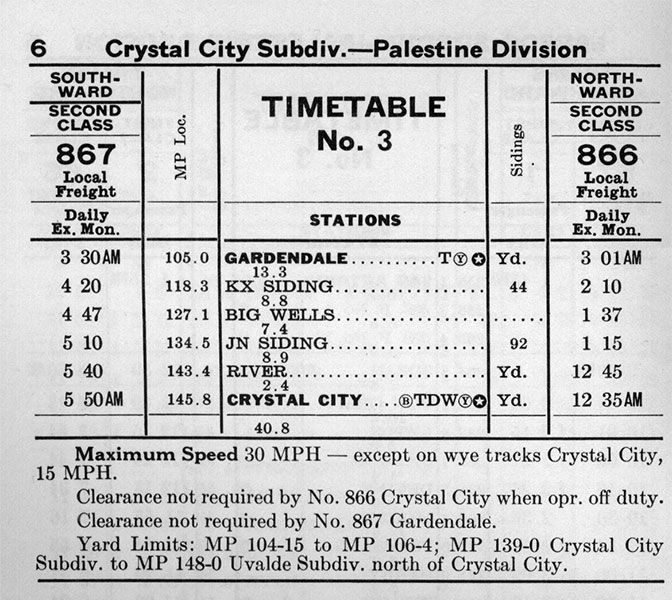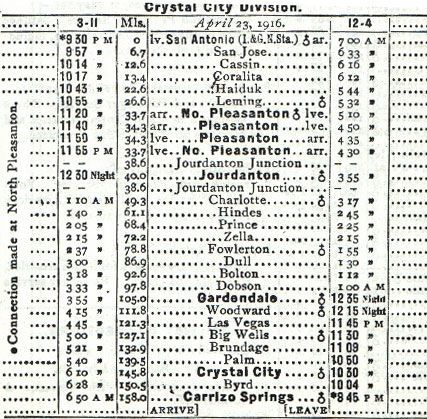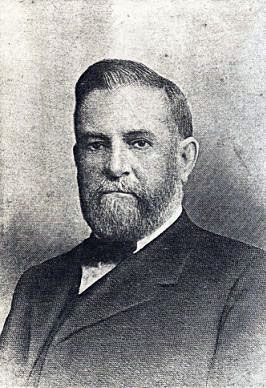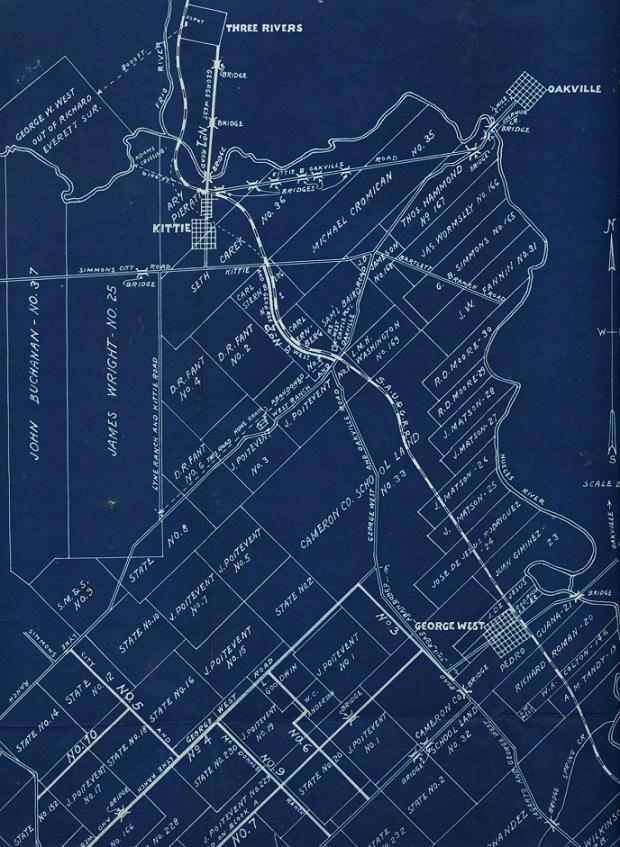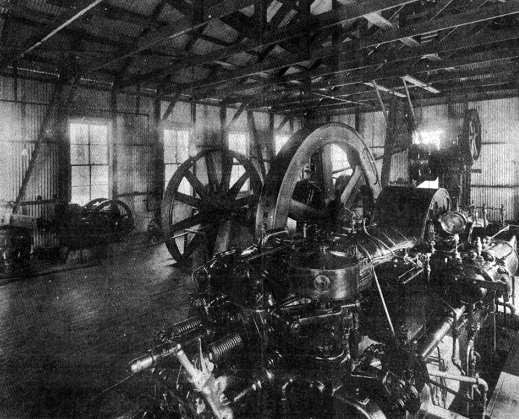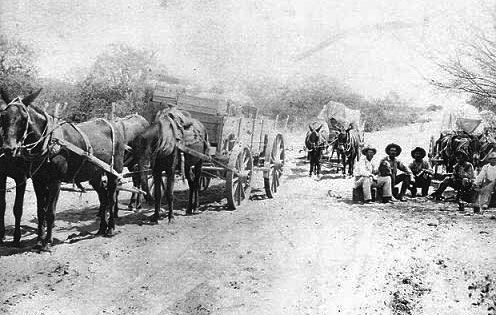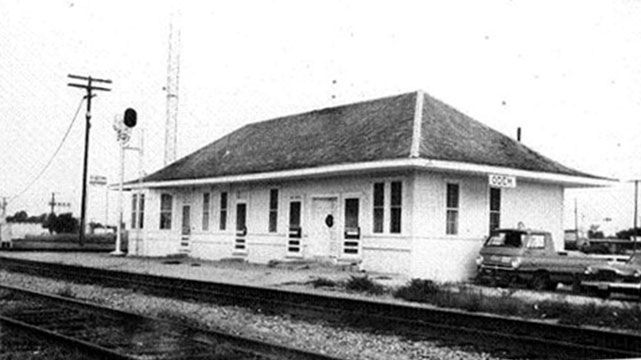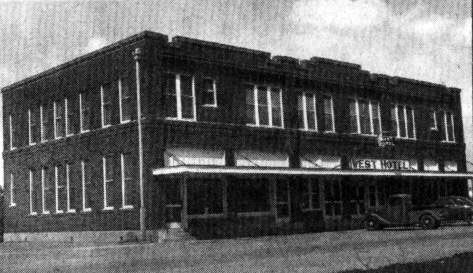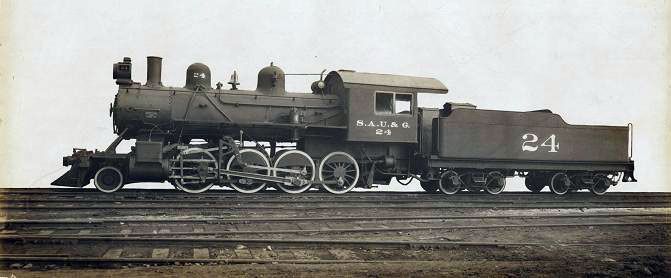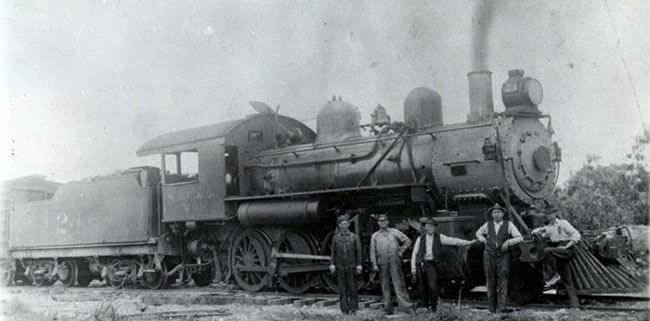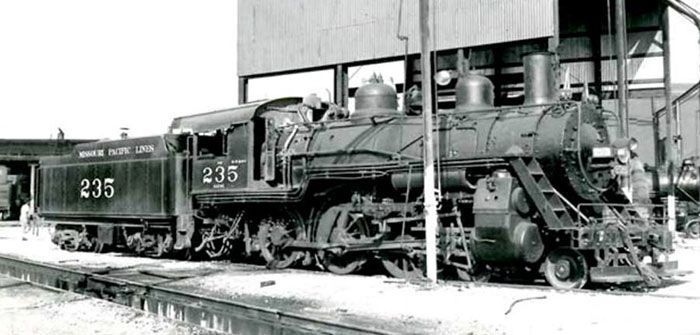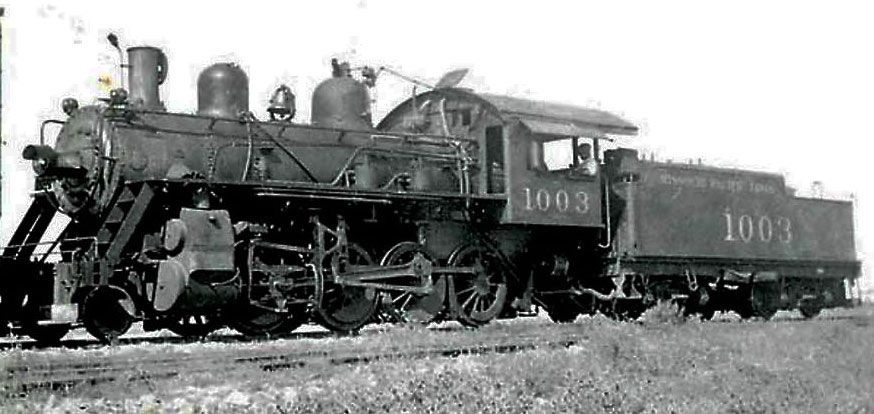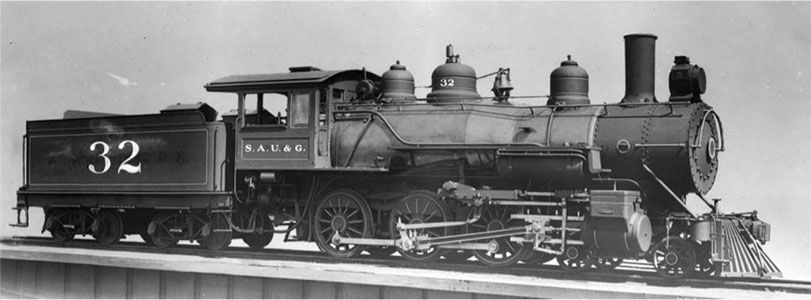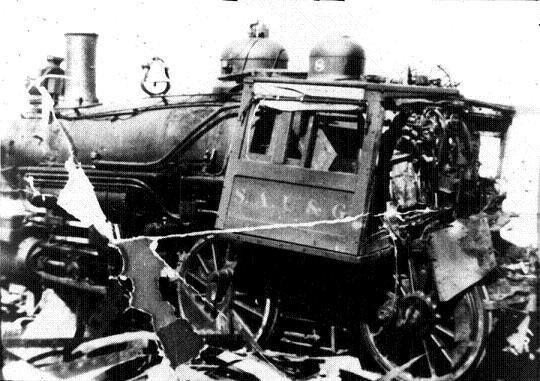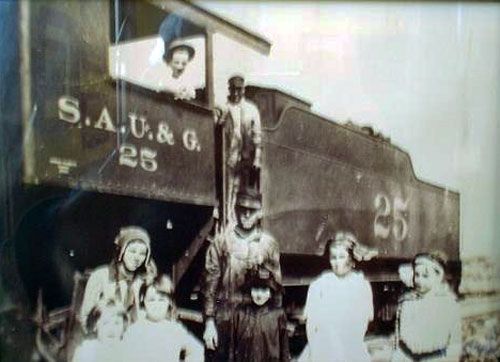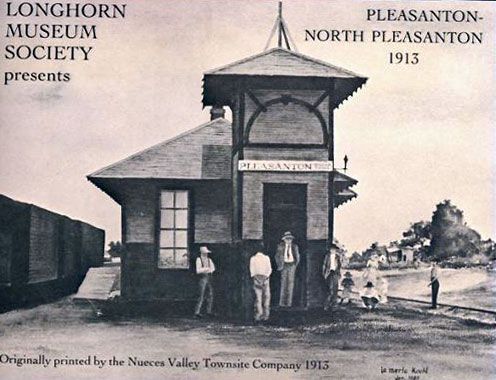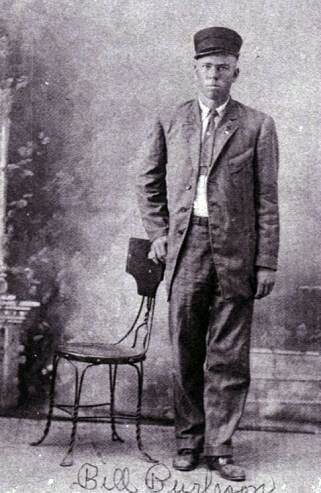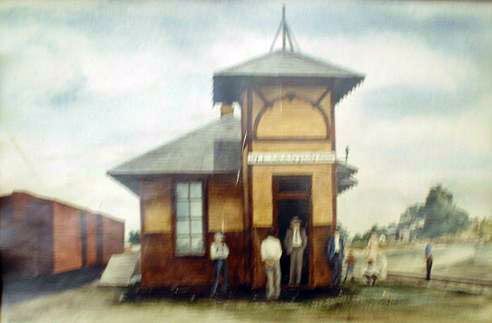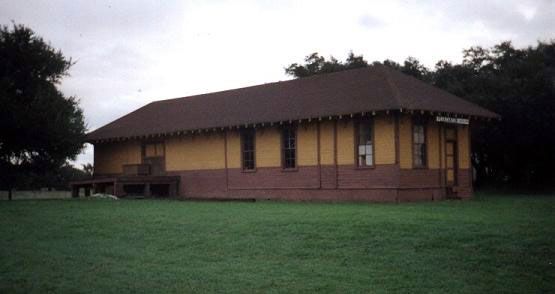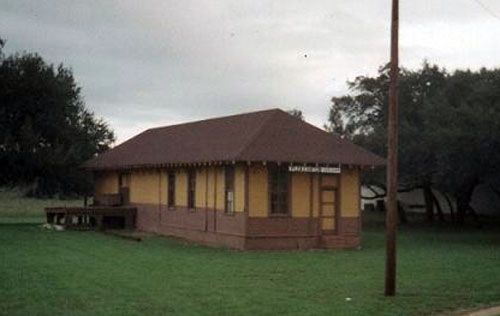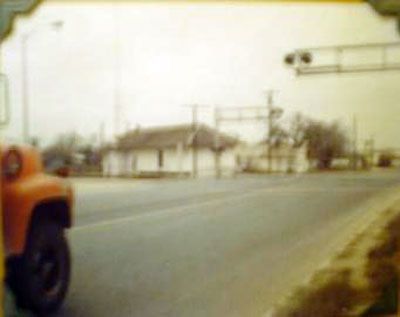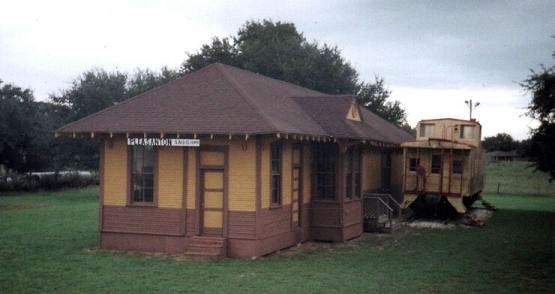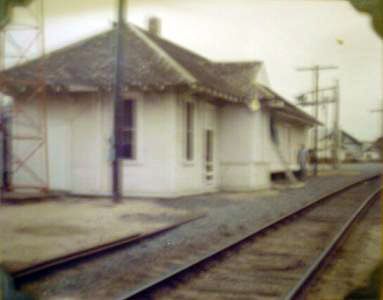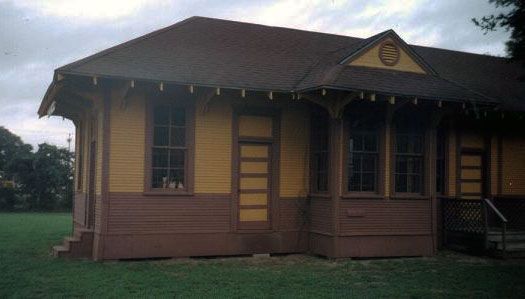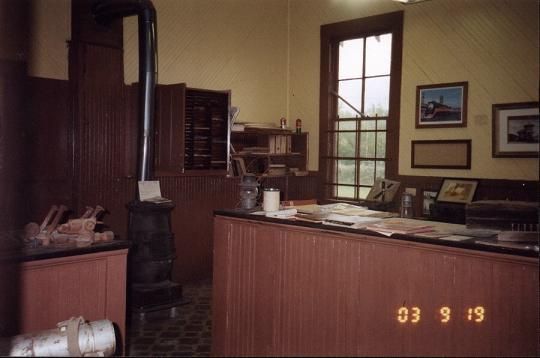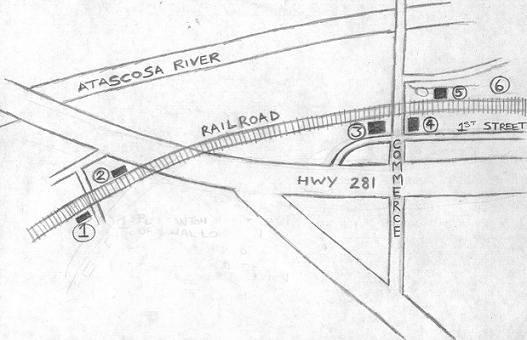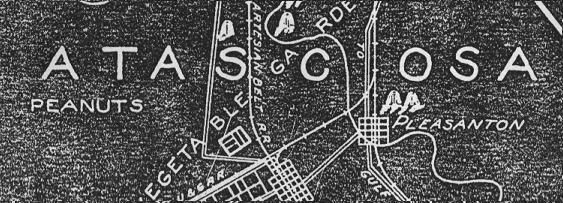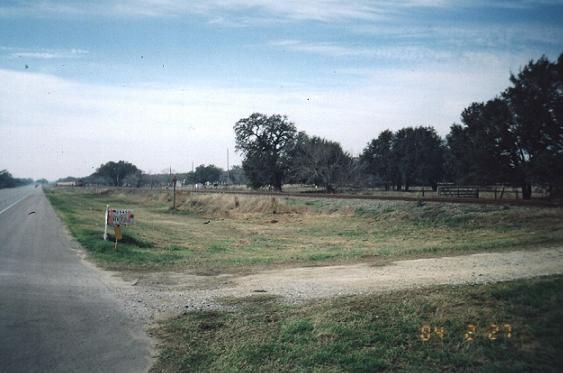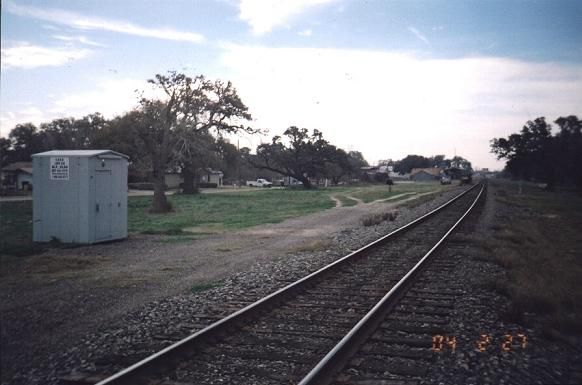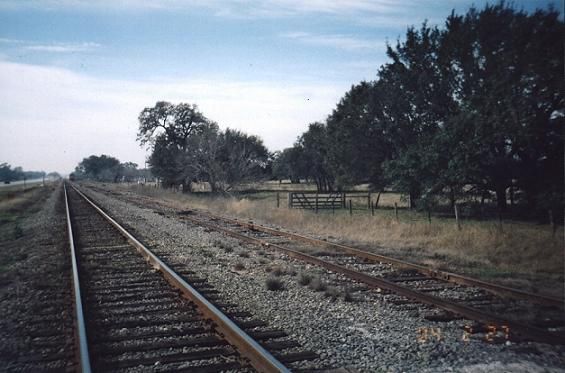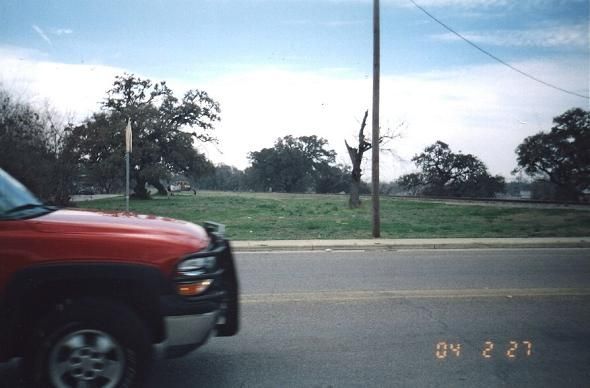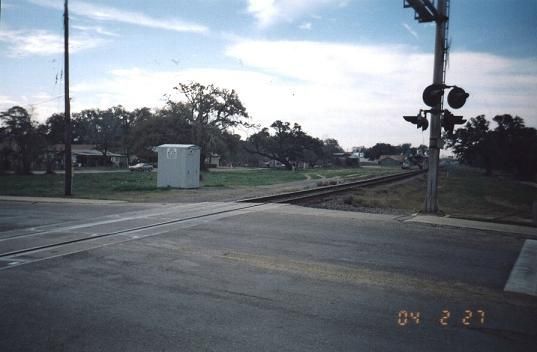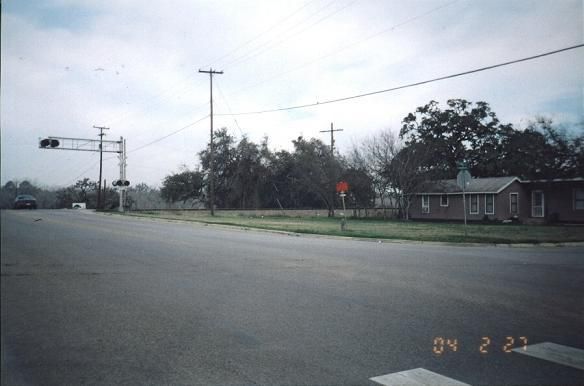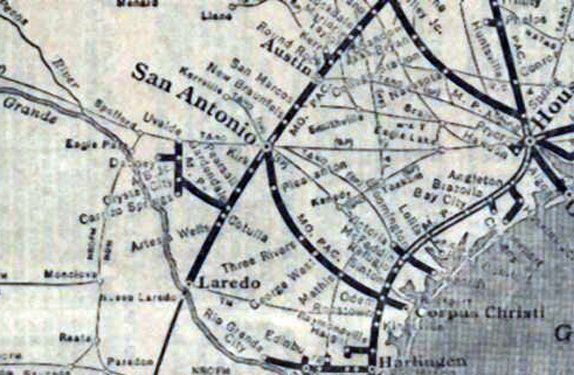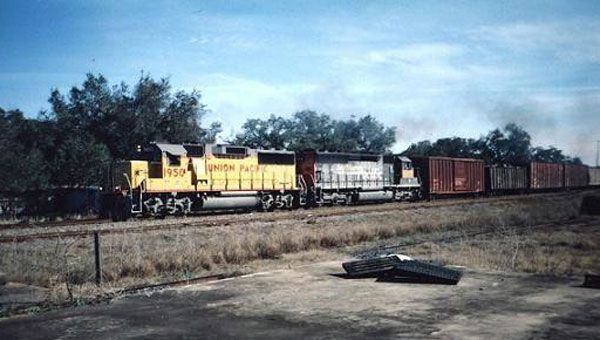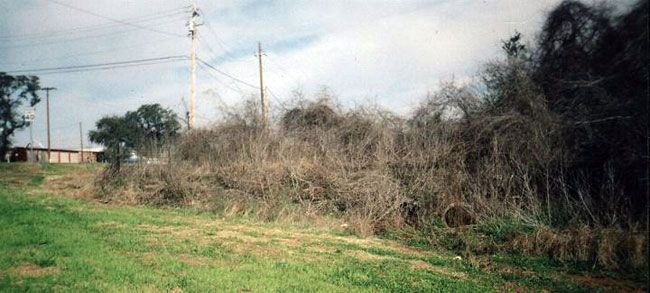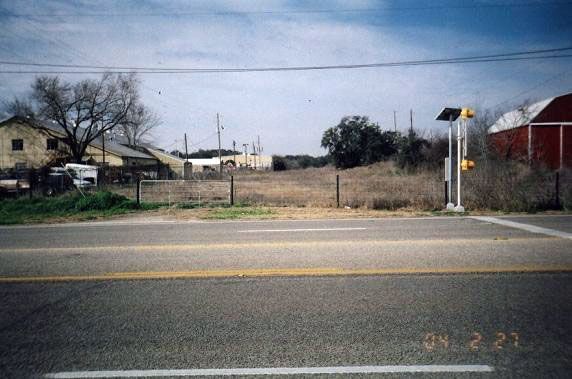San Antonio Uvalde and Gulf Railroad
The chapter is deeply indebted to the Longhorn Museum in Pleasanton. Their generosity went above and beyond the call of duty. Their main building is worth a visit for its fantastic collection and portrayal of this area's history. Their stewardship of the depot, donated by Union Pacific in 1986, is first rate, as is the railroad history presented within. A railroad history buff will need several hours to get an idea of its scope.
The museum is located on Highway 97, the main road into Pleasanton from IH 35. The phone number is (830) 569-6313. They are open five days a week, excluding Sunday and Monday. Admission is by donation, so Please Be Generous.
Thanks also to the public libraries in Crystal City and Carrizo Springs, Norman Porter, Joe Taylor, Bert Bell and Carlotte Cannon
Introduction
The San Antonio Uvalde and Gulf Railroad was a 320 mile system comprised of three sections. It ran first from Uvalde to Carrizo Springs. Then a line between Crystal City to Pleasanton was added. Finally a line from San Antonio to Corpus Christi that ran through Pleasanton was added. The company began life in 1909 as the Crystal City & Uvalde Railroad. It was started by local entrepreneurs to serve a specific need. It became the San Antonio Uvalde and Gulf in 1912. It's independent existence was brief but significant. And, even after it was taken over by the Missouri Pacific conglomerate, its "original "flavor" survived to the extent that, even today, Union Pacific crews plying the route between San Antonio to Corpus Christi still refer to it as "The Sausage," which is the fond nickname the railroad acquired. In 1925 the S.A.U. & G. became part of the Missouri Pacific's "Gulf Coast Lines." The superiority of the route it used to reach Corpus Christi encouraged the Southern Pacific to down grade its own line to the city, the older "San Antonio & Aransas Pass" route, to secondary status and to lease use on the "Sausage." While most of the line's original route, the lines west of Pleasanton, was removed a long time ago, the remaining sections are in heavy use. The main line to Corpus Christi is still the "Sausage".
1st CC & U train, plus trucks in La Pryor
Crystal City railroad depot and map
Crystal City irrigation well and railroad produce loading dock
Crystal City onion field with freight cars and railroad produce loading dock
Crystal City gas station, car in snow and field trucks and tractor
Crystal City grocery store, land office, drugstore plus last locomotive and current static caboose
HO scale model of the San Antonio, Uvalde and Gulf railroad depot in Crystal City built by master modeler J.W.Hipp
Pages from the 1910 Winter Gardens Ranch promotional brochure
First and second Carrizo Springs railroad depots, a map showing depot location and abandoned railroad right of way today
Atascosa County map, depots in Gardendale, Folwerton and Charlotte
The San Antonio, Uvalde & Gulf began in 1909 as the Crystal City & Uvalde Railroad Company. The line ran almost exactly 41 miles, north to south, between Uvalde and Carrizo Springs. The original plan was only to reach Crystal City but the folks at Carrizo Springs were so concerned about the future of their town that they offered a substantial bonus to get the railroad to continue south to their city. The railroad was created to serve the new town of Crystal City, which is located in one of the most fertile agricultural areas of Texas, best known for its winter fruits and vegetables. The area's developers were hand in glove with the railroad. Carrizo Springs predates both Crystal City and the railroad by several decades. Its citizens knew that not being served by a railroad when one was nearby was often fatal to many an established town in those days. It also faced rising competition from the new town of Asherton which was created by a developer who was building his own line, the Asherton & Gulf. Carrizo Spring's status as county seat was in jeopardy. The CC & U was happy to oblige, as it doubled the potential for freight and passengers. At Uvalde, the new railroad's starting point, the CC& U snaked through the town to the main Southern Pacific line, running east to west, from San Antonio to El Paso. The creation of the CC & U line meant that farmers and ranchers, both new and established, in the newly served area could reach much larger markets for their produce and cattle.
The new line's revenue was desperately limited. When more money from colonizers was offered, it was decided in 1912 to make more additions to the line. Today, colonizers would be called land speculators. They bought up large ranches and sub-divided them, for sale at public auction. To make the lots more attractive, towns would be platted out as well, and very often a lot within the yet un-built towns would be thrown in with a purchase of a larger farm. Railroad service was vital to the success of these auctions, not to mention the viability of the farms and towns to be created. There were no roads in the area worth speaking of and no tax base within these poor counties to build any. Some of these communities were given very optimistic names, like Las Vegas. Of the many names you will see on the 1916 map, between Crystal City and Pleasanton few still exist today. Despite some interest by Belgian immigrants, Las Vegas lost its post office in 1917 and had only one occupant in 1940. Today it is completely gone.
Starting at Crystal City, a new line heading east was added to Fowlerton, once a bonus was offered by the Fowler brothers who were trying to develop the town. This was the only eastward rail construction in this area. Fowlerton was reached on 4/4/1912. It is now yet another town that hardly exists today. The town was laid out a few years before the railroad came through. It had a population of over one thousand, with attendant businesses and even telephone service. After reaching a peak in 1914, the town began to decline. Droughts and low produce prices badly affected farmers. The Fowler brothers, who had heavily advertised the town, as colonizers, were up to their ears in law suits from buyers who felt they had been duped. By 1925, the populating had declines to 600. The town, like much of the area, never recovered and today it has only around 100 inhabitants. The S.A.U. & G line brought only temporary prosperity. The prospects of the railroad were not any better with these extensions and its fate reflected the hardships the area suffered.
It was at this point that the nature of the whole company was transformed. The tracks turned sharply to the north east after Fowlerton, heading for Pleasanton. The CC & U had always vaguely hoped to head towards a port on the gulf but with no real plan. Instead, at least in the short term, the railroad went in the opposite direction. The reason for this was a merger with yet another railroad, the Mexico, San Antonio & Gulf (M, SA & G) that was only in the planning stages but had secured a right of way between San Antonio and Corpus Christi . The M, SA & G was created to satisfy a call made by city leaders in both large cities who were very unhappy with the service being provided by the Southern Pacific, and wanted a company to build an alternative line. Thus it was that the CC & U merged with the M, SA & G to become, briefly the San Antonio, Rio Grande & Gulf, (SA, RG & G) before changing name again to become the San Antonio Uvalde and Gulf (SAU & G). The new line between San Antonio and Corpus Christi would link with the CC & U in Pleasanton. The backers of the planned Mexico, San Antonio & Gulf were given a share in the new SAU & G in return for the right of way they had acquired between San Antonio and Corpus Christi. On its peculiar way to Pleasanton from Fowlerton, the new SAU & G went through Charlotte and then one mile north of the new town of Jourdanton, where it intersected with yet another new railroad, the Artesian Belt, built just a few years earlier. A one mile spur was built into Jourdanton, and a depot. For a while the town had two depots, but the spur was removed in 1920. For some time, even before both lines were acquired by the Missouri Pacific, both companies had the same agent in Jourdanton. Pleasanton was reached in 1912.
Almost all the financial backing for the new SAU & G came from Missouri. Naturally they wanted a man they knew and trusted. They chose A.J. (Abraham Russell) Ponder who had worked building and improving railroads and developing other forward looking businesses, including a long distance telephone company, in Missouri for over twenty years. Born in 1867, he had moved to Texas in 1908 to be build the Mexico, San Antonio & Gulf RR line between San Antonio and Corpus Christi and ultimately paid 25% of the resulting construction costs. With Ponder as company vice-president and general manager, the SAU & G hired Ernest Breaker, also of Missouri, to be the chief construction engineer. The company's headquarters moved from Crystal City to the new city of North Pleasanton. This led to the construction of an imposing two story building, both a passenger depot and company office, in "North Pleasanton." "Old" Pleasanton carried on as before. It got a railroad depot of its own, only one sixth of a mile from the much grander structure that graced North Pleasanton. The new town was heavily promoted by colonizers and one of their booklets, from 1913, has been reproduced and is available from the Longhorn Museum. The importance of Pleasanton was that it was here that the line united. To its north is San Antonio, to the west was Crystal City and to the south east is Corpus Christi. Thus the railroad was to service a huge and dynamic swathe of south Texas which, in 1912, was growing rapidly. The expanded line built maintenance shops in North Pleasanton and carried out the many activities needed to run the railroad.
1912 was late in the history of railroads for new lines to be built. San Antonio was the last major city in the USA to receive rail service and that was in 1877. But along the proposed route of the SAU & G much of land was essentially undeveloped, with only large and small ranches raising cattle. Land speculators saw opportunity everywhere and they gobbled up many a ranch with a view to selling them off in smaller, profitable, chunks. The railroad was heavily involved in this activity also. In fact this was the main way it helped defray the costs of construction. Rail service, in the absence of paved roads and suitably large, reliable, trucks were very much needed to develop the area. Public roads outside of bigger towns were unpaved and prone to flooding. Road improvements were a long way off. Railroads are cheaper and faster to build than roads, require less land and are far less intrusive on the country they cross. In addition, railroads were, and still are, private enterprises. If someone wanted to build one and land owners were willing to give them right of way, it was a fairly easy proposition to get the task accomplished. In Atascosa county alone, the S.A.U. & G. led to the creation six new towns; Leming, North Pleasanton, McCoy, Coughran, Charlotte and Hindes.
One landowner further south, in Live Oak County, was George West, who owned a massive cattle operation and ranch half way between Pleasanton and Corpus Christi. He paid the railroad $100,000.00 and allowed free right of way across his land, so enthusiastic was he to get rail service. He had made his fortune on cattle drives and knew putting the animals on a train was a much better proposition all around. He had purchased some 120,000 acres in Live Oak County on which he had some 26,000 cattle in the early 1900s but a devastating drought had caused such losses to his herd that he had been obliged to sell off around half of his land. With no water, low prices caused by everyone else trying to sell their cattle at the same time and no means to ship cattle anyway, West, a leader of some historic cattle drives, learned the value of railroad service the hard way. He had seen empressarios such as Charles Simmons, another Missourian, make a fortune creating farms and towns dividing a vast ranch in nearby Atascosa County once owned by the Oppenheimers, who used the $500,000 sale to enter the banking business. Simmons had raised the money by subdividing land he had had earlier purchased from West. To establish his new towns, such as Jourdanton, Simmons had built his own railroad. West now wanted in on the lucrative business.
In due course the towns of Three Rivers and George West were platted out on land owned by Mr. West. Depots were built in both towns and both became successful. West also gave land and $75,000.00 to have a new county court house built in the town bearing his name, which led to the eventual eclipse of nearby Oakville, which never got rail service. The new court house actually cost $120,000 and his own contribution was conditional upon it being built to his own specifications. He also created a large hotel near the depot which also housed, in a separate building to the rear, the town's original source of electrical power. Three Rivers is now home to a major refinery owned by Valero, and the town has a large number of rail sidings to accommodate the large amount of tanker cars needed to ship its various products. George West is still the County Seat but its old main street is considerably faded as businesses moved to the improved HWY 281 which runs to parallel to the railroad several blocks north.
In 1912, hopes were very high at the S.A.U. & G.. On September 16, the first train from San Antonio pulled into Pleasanton. It had started out from the International and Great Northern Depot. The S.A.U. & G., which would soon be given the nickname of "The Sausage," used the I. & G.N. tracks within San Antonio. The train arrived to enormous fanfare at 9:15 AM. On November 19 the first train ran from San Antonio to Carrizo Springs. In 1913 construction of the handsome, two story depot was completed, with the upper level providing space for the railroads offices. On 2/28/1914 train service to Corpus Christi began and the railroad reached its zenith with total trackage of 320 miles. The town of Pleasanton, which had been platted in 1856, experienced a huge population growth. In 1912, only 450 people called it home. By 1914 it had risen to 1,500. The separate town of North Pleasanton was growing by leaps and bounds. (The two Pleasantons would coexist until 1961.) The smaller depot built to serve "original" Pleasanton has survived. It was donated to the city in 1986 by the Union Pacific and was moved, along with a UP caboose, to the Longhorn Museum on HWY 97, between the town and Interstate 37.
But costs had been high, and even with bonus money to help finance the railroad, the company called in the receivers on 8/14/1914. Prior to this, SAU & G VP and GM Ponder had been obliged to visit with the San Antonio Chamber of Commerce about still getting their bonus of $50,000 for completing the line to Corpus Christi by 2/2/1914, a deadline the company missed by 26 days. As Ponder later became the head of the SA CoC, it is quite likely he was successful. Other problems beset the SAU & G. Drought had both hindered construction and hurt farmers badly, and rail business immediately failed to meet expectations. The already decades old campaign to obtain federal funding to create a deep water port in Corpus Christi would not be successful for another twelve years, so shipping was very limited. When it did rain, the land would become boggy and damage to the tracks from flooding became a constant expense. With the initial bubble of optimism burst, the S.A.U. & G. was obliged to declare bankruptcy in August of 1914. It is one thing to build a railroad and buy locomotives and rolling stock. (During the companies independent existence it only ever bought one new locomotive, from Lima. Most of the time it bought used engines, or traded them with other companies.) It is quite another to run a profitable enterprise and repay your creditors. This fate befell many a railroad and it is why so many promising starts soon came crashing down to earth. It also lead to railroad consolidation, as economies of scale allowed larger organizations to operate marginal lines with greater efficiency. In 1917 the SAU & G was bought outright for only $1 million from its main creditor bank by another group of business men with A.R. Ponder, who had stayed with the company as general manager during the bankruptcy, acting as principle owner. This was because Texas law then obliged all railroads operating within Texas to be owned and operated within the state. It would appear that the bulk of the funding came from a successful Missouri oil business man by the name of John T. Milliken. This is not to say that Ponder, who now lived in the wealthy enclave of Alamo Heights did not invest himself. He believed passionately in the SAU & G and used every opportunity, including becoming the head of the San Antonio Chamber of Commerce and being involved with any number of other civic organizations to promote it.
Like every other US railroad, the S.A.U. & G. was taken over by the federal government on 1/1/1918. Railroads were considered to be failing the war effort for WW I. It was returned to the receiver in February of 1920. On 12/1/1925, the "Sausage" was purchased by the New Orleans Texas & Mexico Railroad, acting on behalf on the Missouri Pacific and lost its independence. It became part of the Missouri Pacific's "Gulf Coast Lines," one of its three Texas companies. Under Texas law, any railroad operating in Texas had to be owned and run by a Texas Company. It was also around this time that the Missouri Pacific took full ownership of the International & Great Northern, also via the N.O.T & M. And, although the S.A.U. & G. used the I. & G.N. depot in San Antonio and its line into the city, both operations remained separate. The main purpose of the I. & G.N. was service to Laredo and Mexico from the north. The S.A.U. & G. served Corpus Christi, so it was natural for it to be part of the "Gulf Coast Lines".
Deatila from the 1920 "Railroad Commission of Texas" report can be found by clicking on the link in the right side column. The full report gives a lot of detailed information about every railroad in Texas. The level of detail is almost mind boggling. It gives, over a variety of headings, a detailed insight into the S.A.U. & G. The total length of the its tracks came to 340.43 miles. That is broken down into the three constituent parts of the "system":
144.43 miles from San Antonio to Crystal City
52.83 miles from Uvalde to Carrizo Springs
117.26 miles from Pleasanton to Corpus Christi
The line was not operating at a profit. While it generated $1,442,189 in revenue, its expenses were significantly higher, at $1,744,333. As mentioned, most of its area had not lived up to the dreams of its developers. The line was also prone to flooding and this was a huge drain on its meager resources. In 1926, following the "merger," the "Sausage" lost its own shops in Pleasanton, and its offices. The railroad's rolling stock was absorbed into the bigger Missouri Pacific system. This is one of the ways that larger companies save money, by centralizing maintenance and purchasing, and also by streamlining office work as well. Local control of the operation was lost and it became, more and more, just a small section of a unified railroad empire. Although he was individually successfully sued to prevent him absorbing funds deducted from employees for their health care both in 1912 and in 1925, his efforts on behalf of the SAU & G were easy to recognize and he was given the position of Vice President of the Missouri Pacific along with the title of Superintendant of MOPAC's San Antonio division, which gave him authority over the far larger International & Great Northern, the short-line San Antonio Southern built by Charles Simmons and the Asherton & Gulf built by Asher Richardson. Ponder died in the town of Asherton, also created by Richardson, in 1931. The Missouri Pacific itself went into receivership not long after its wave of short line purchases in 1933. It remained in receivership until 1956. As a result, because bankruptcy law forbade much in the way of absorbing new companies into a financial structure that was itself in difficulty, many of the lines it had taken control of in the 1920s were able to maintain at least some of their original structure and identity.
This changed rapidly after 1956 and everything became, simply, Missouri Pacific. With the improvements in the road system and the emergence of larger and larger trucks, many of the smaller lines became less and less viable. In 1959, the tracks from Pleasanton to Gardendale were pulled up. The "Sausage intersected the main MOPAC line to Laredo at Gardendale, which, in 1931, had a school with 50 students. It is little more than a ghost town today. The old "Sausage" was no more. What remains today is the line from San Antonio to Corpus Christi. An attempt was made by a new company bearing an old name, Crystal City Railroad, to keep the western leg open, from Uvalde to Carrizo Springs, and Crystal City to Gardendale. The C.C. R.R. was operated as an independent short line from 1990 to 1992. but went out of business in 1992. The tracks themselves were removed ten years later.
Such is the stuff that dreams are made on. With more than a little help form Norman Porter, the Chairman of the Atascosa County Historical Commission, we can now say definitively where the various railroads buildings and operations were. The depot in North Pleasanton was just at Commerce and 1st Street. The land remains unoccupied since it was torn down. Passenger traffic to Crystal City ended in 1957, two years before the tracks to the west of Pleasanton were removed. The spur was connected to the existing line some two miles north of town with a "Y" arrangement. The Pleasanton depot was relocated from its first location in the 1930s, when HWY 281 was upgraded. It was at this time that the building lost its distinctive tower at one end. Termination of passenger service to Corpus Christi remains vague as special trains to the coast continued into the 1960s.
Not too much remains of the SAU & G yard in what was then North Pleasanton. A little further down towards the river on Commerce Street, on the other side of the road from the depot, is a small road that takes you to the golf course. There is a large foundation there that was once the railroad superintendent's offices. This building was later used by a fertilizer company, but that too is now gone. It was in this area that the railroad had its shops, its round house and other operations, like a dipping vat to treat railroad ties. The remains of the turntable, which is to say a large hole can also be found by the more adventurous.
With the takeover of the Missouri Pacific by Union Pacific in 1980, the "Sausage" has had several names. First the S.A.U. & G. Then "Gulf Coast Lines." Then Missouri Pacific and now Union Pacific. The line to Corpus Christi is now over ninety years old. It is thoroughly modern and is now the only line between it and San Antonio. Massive trains, some a mile and a half long, still ply the line forged so many years ago. Railroad crews still refer to the line as the "Sausage". Its legacy continues.
San Antonio, Uvalde and Gulf Railroad Timeline
━━━━━━━━━━━━━━━━━
1909
The Crystal City and Uvalde (CC&U) RR is formed, with a connection to the main Southern Pacific line between San Antonio and El Paso
━━━━━━━━━━━━━━━━━
1910
The CC&U is extended to Carrizo Springs, the seat of Dimmit County
━━━━━━━━━━━━━━━━━
1911
The CC&U begins building haphazardly eastward from Crustal City, following bonuses offered by land developers
━━━━━━━━━━━━━━━━━
1912
The CC& U reaches the new town of Folwerton on the eastern side of the main Missouri Line between San Antonio and Laredo
Approached by Corpus Christi investors, the CC&U agrees to extend its line to Pleasanton and from there build north to San Antonio and South-east to Corpus Christi
━━━━━━━━━━━━━━━━━
1913
The CC&U builds through land owned by George West. He builds a hotel and later a court house, and soon the new town gains the seat of Live Oak County from nearby Oakville which, by-passed by the railroad, soon withers away.
━━━━━━━━━━━━━━━━━
1914
The tracks between San Antonio and Corpus Christ are completed. The company changes its name to the San Antonio, Uvalde and Gulf (SAU&G). Its HQ is moved from Uvalde to Pleasanton. A new two story station is built in a new town called North Pleasanton, with maintenance shops, etc. A more humble wooden depot is built in "old" Pleasanton, less than a mile away.
Crippled by lower than expected freight revenues and high construction cost debt, the SAU&G declares bankruptcy
━━━━━━━━━━━━━━━━━
1917
A new group of investors acquires the SAU & G. The group was led by A.J. Ponder who had lead the company as VP and GM since 1912.
━━━━━━━━━━━━━━━━━
1920
The Spur from the SAU&G tracks that ran north of Jourdanton into the center of the town are removed
━━━━━━━━━━━━━━━━━
1925
The SAU&G is acquired by the Missouri Pacific (MOPAC) and folded into its Gulf Coast Lines (GCL) Division. This is almost a clerical issue only. The public at large only saw MOPAC, which also acquired other independent lines in the area including the Asherton & Gulf, and the San Antonio Southern.
━━━━━━━━━━━━━━━━━
1926
The SAU&G maintenance shops in North Pleasanton are closed with all work transferred to San Antonio
━━━━━━━━━━━━━━━━━
1933
MOPAC itself enters receivership. It does not emerge until 1956. Service is not affected.
━━━━━━━━━━━━━━━━━
1957
The two story North Pleasanton masonry depot is demolished. The more modest wooden depot in Pleasanton, now relocated nearer the main road, remains, as a crew and dispatch office, as passenger service fades away.
━━━━━━━━━━━━━━━━━
1959
The tracks between Pleasanton and Gardendale on the main MOPAC line between San Antonio and Laredo are puled up.
━━━━━━━━━━━━━━━━━
1982
The merger of MOPAC with the Union Pacific announced two years earlier becomes official
━━━━━━━━━━━━━━━━━
1990
A short lived attempt to maintain railroad service from Gardendale and Crystal City, the Crystal City Railroad is formed. After two years, it fails and the tracks are removed
━━━━━━━━━━━━━━━━━
2006
Toyota opens a pick-up truck manufacturing plant on the south side of San Antonio close to the old SAU&G tracks. SA's excellent rail connections were a big draw for the company. A spur lines serves the plant, which receives the bulk of its materials and ships most of its output by rail.
Transportation Museum
CONTACT US TODAY
Phone:
210-490-3554 (Only on Weekends)
Email:
info@txtm.org
Physical Address
11731 Wetmore Rd.
San Antonio TX 78247
Please Contact Us for Our Mailing Address
All Rights Reserved | Texas Transportation Museum
